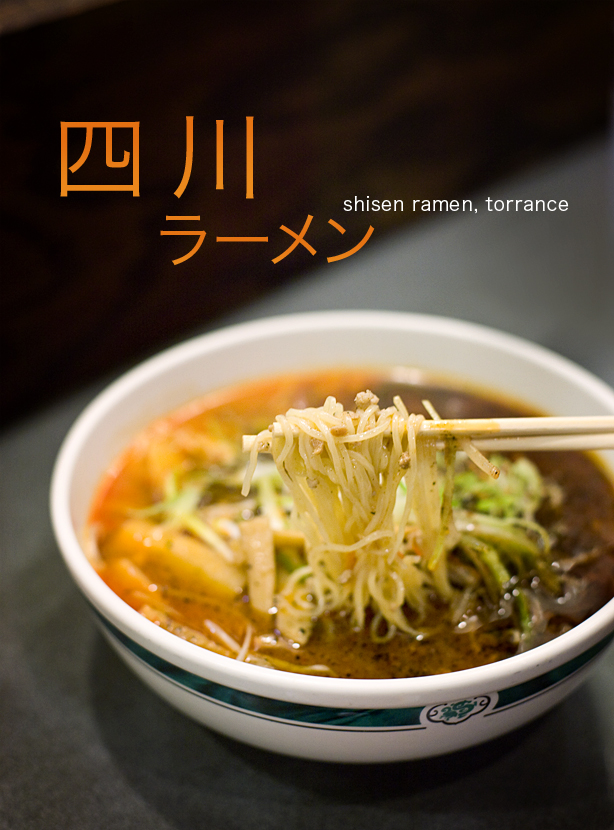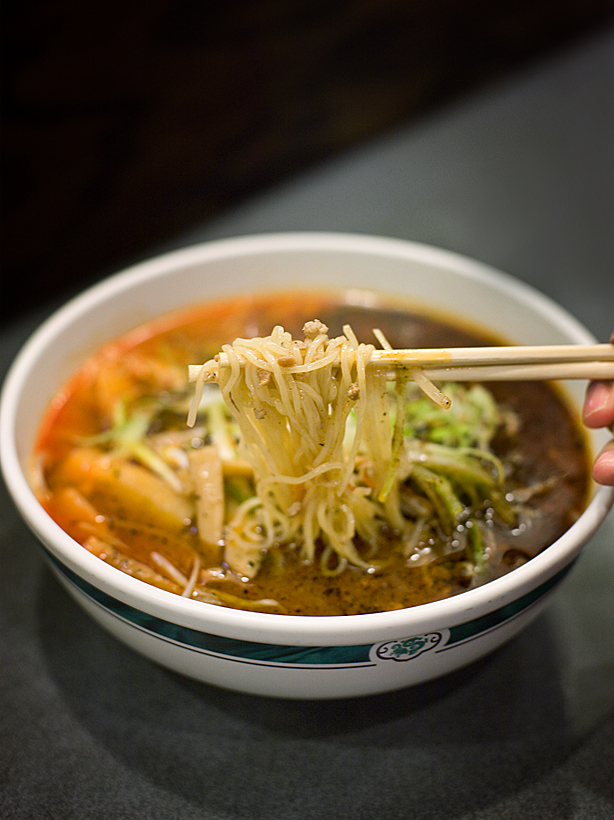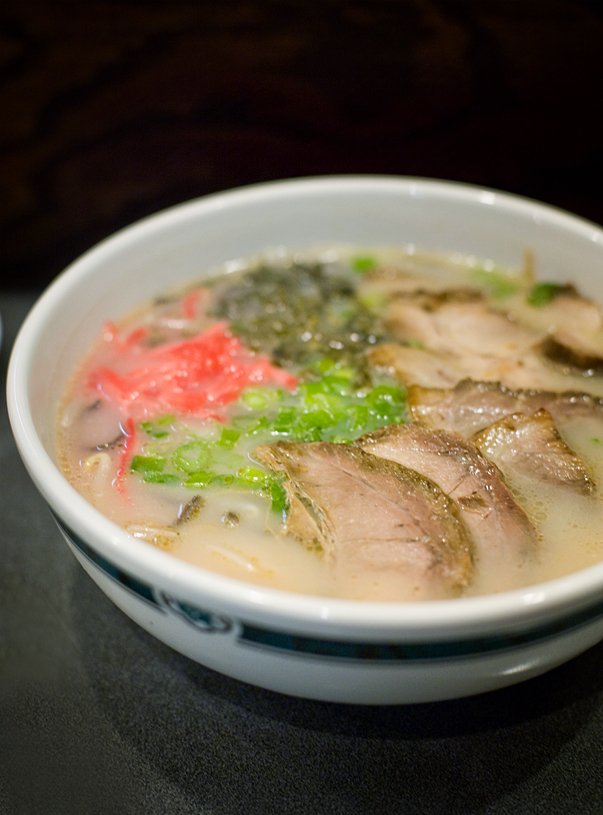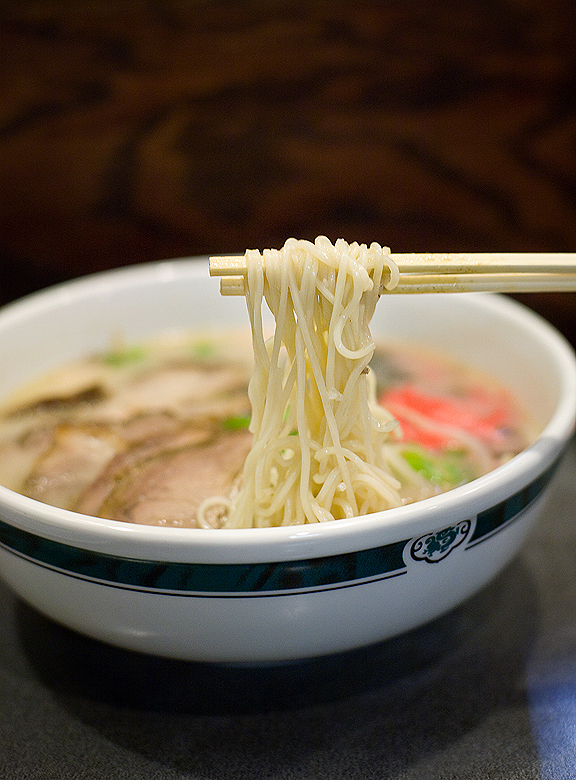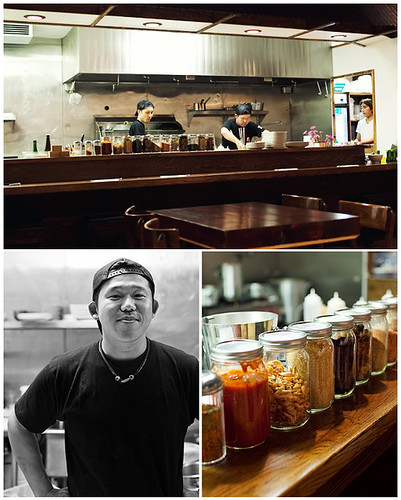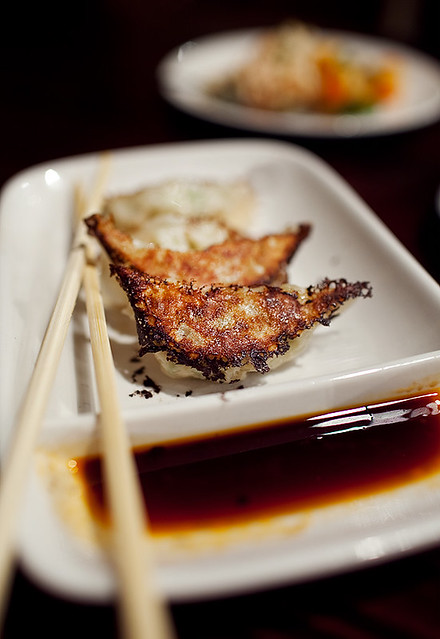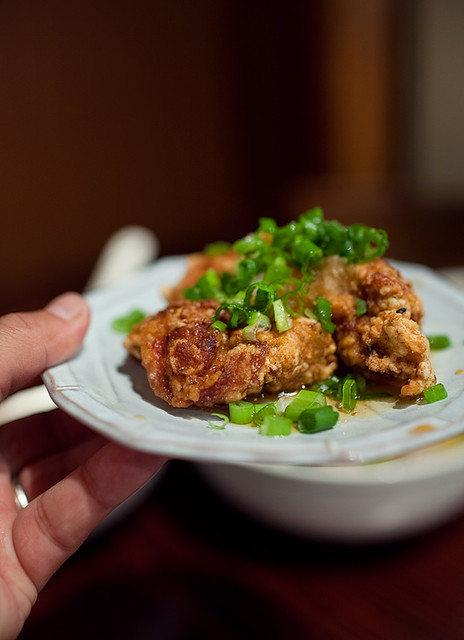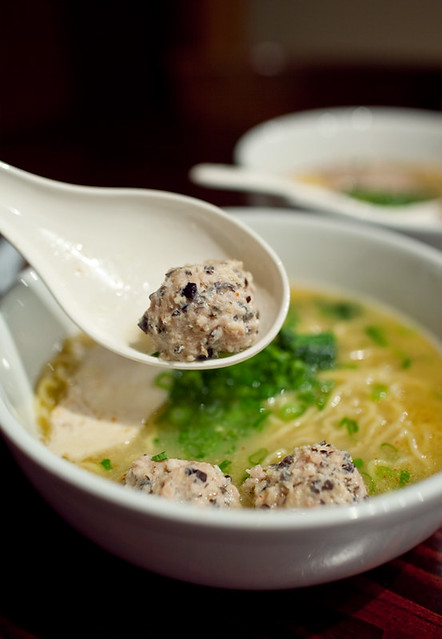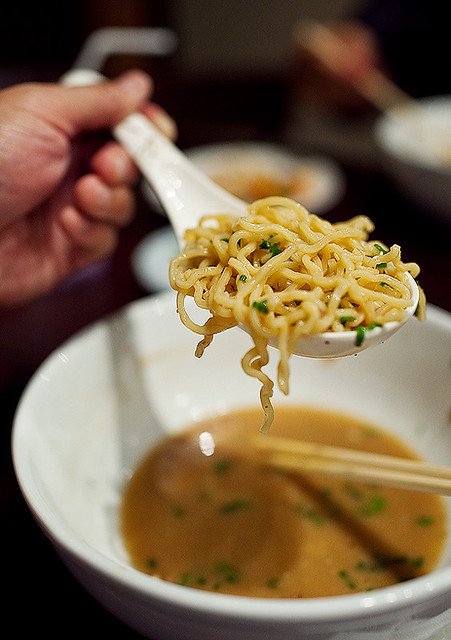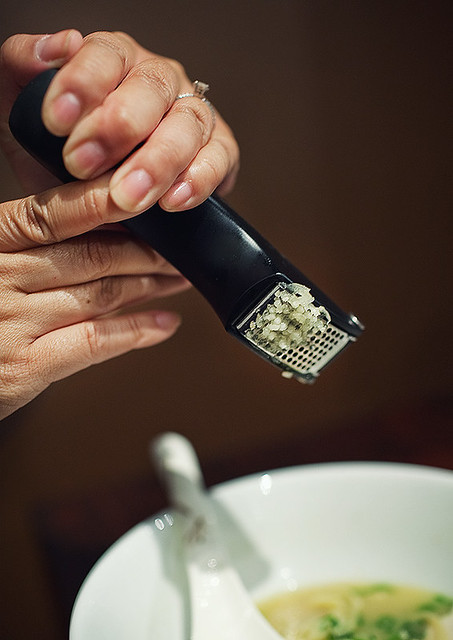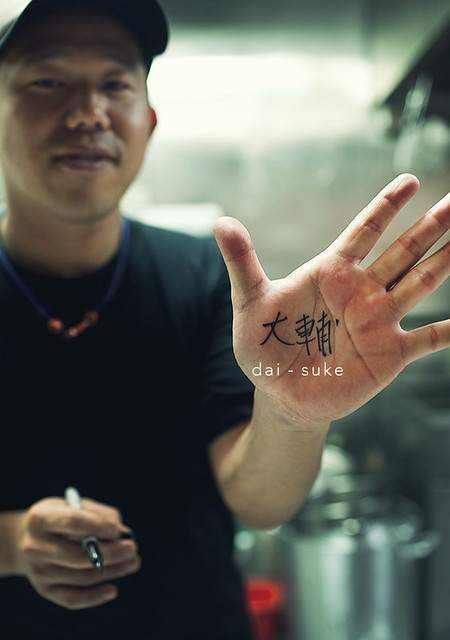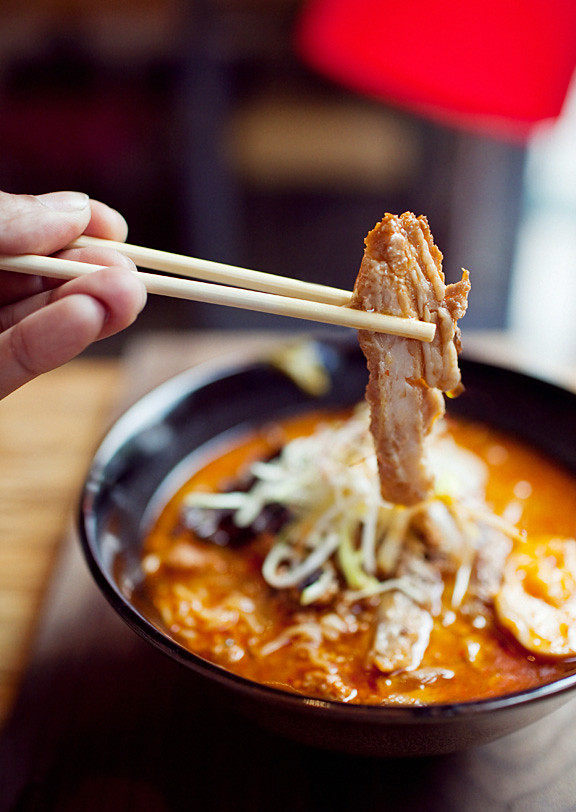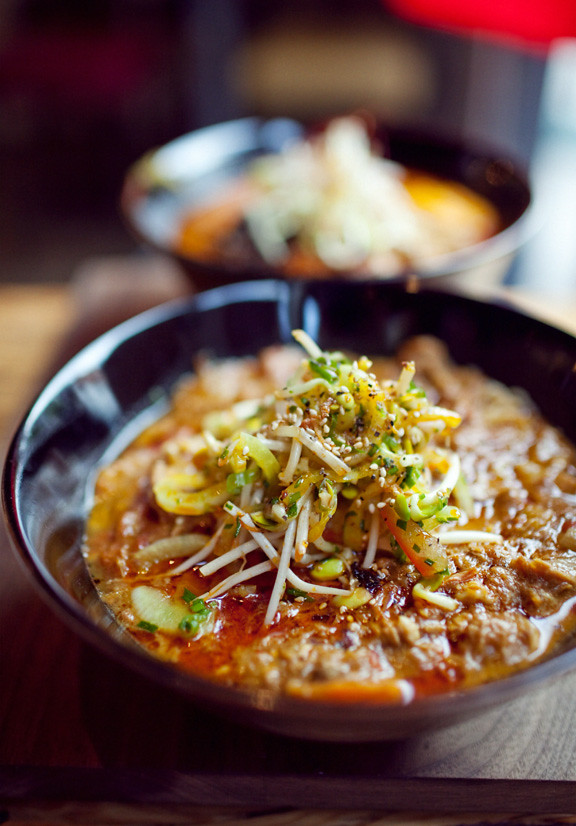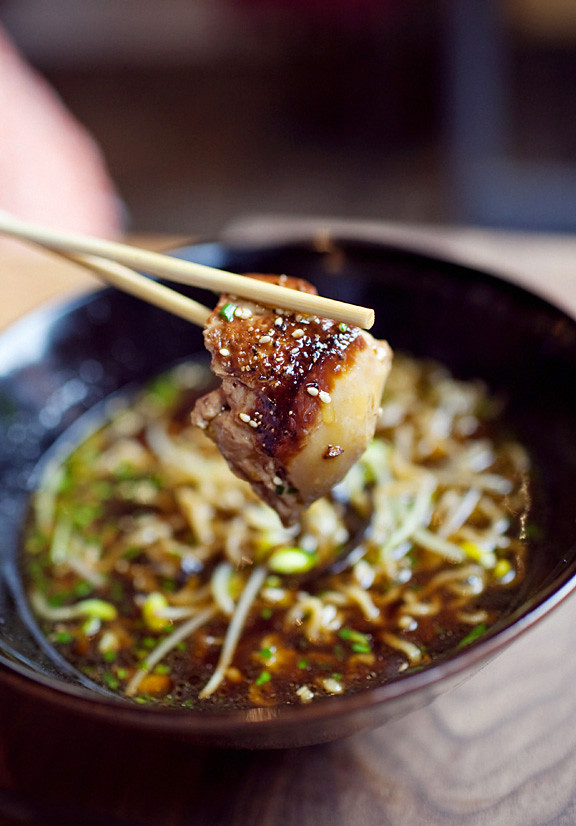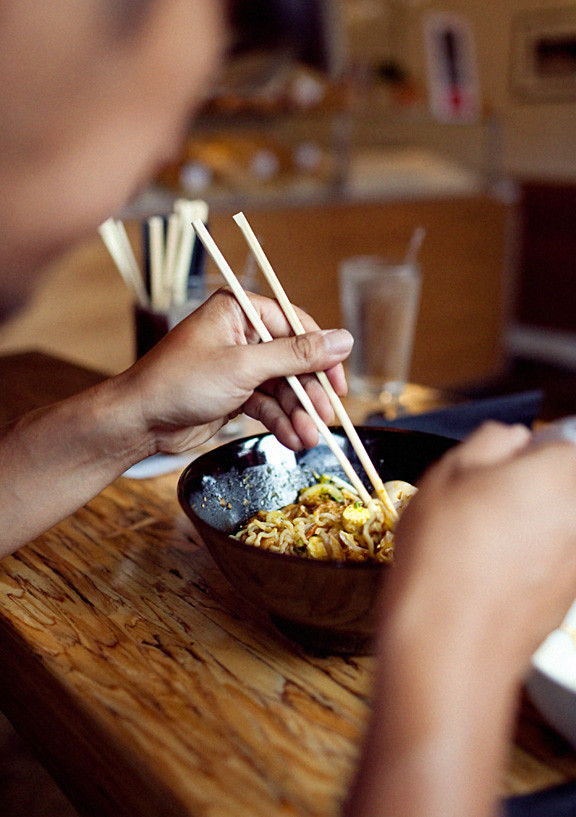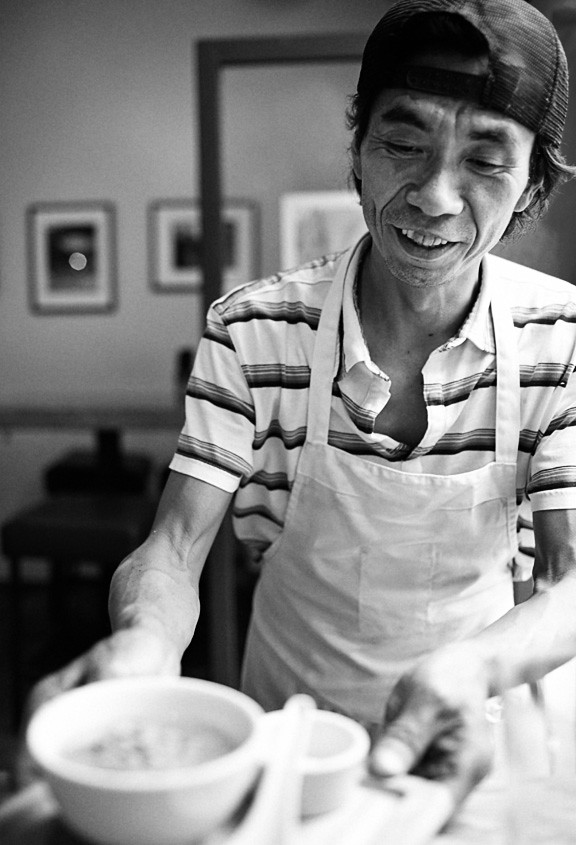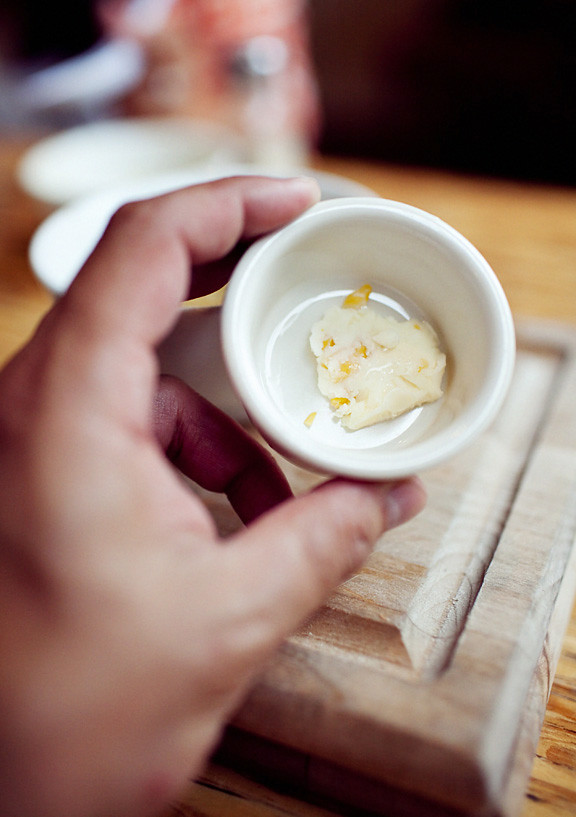I think my appreciation for ramen came after my friends and I went to Japan for the first time. We weren't particularly hunting for ramen, but more so, let the smells and signage of a ramen shop attract us. And we fell in love. Japan made it really easy for us to find food through one simple principle: cook nothing but delicious food. Every shop we went to was simply solid. From light, salt-based and soy sauce-based soups (shio and shoyu) to thicker-stock soups (tonkotsu), they were all good. For a while, the ramen shops on Sawtelle row represented the ramen capital. And it wasn't until coming back from Japan, that we realized that those noodle shops just didn't cut it. We reminisced and lamented for a while. We tried to find a place that offered a more rich-style broth other than salt and miso paste.
Then came Shin Sen Gumi (Gardena, Costa Mesa & Rosemead) and Daikokuya (Little Tokyo) opened, creating this pork-bone soup craze that changed the Los Angeles ramen scene. Shortly after, a wave of new ramen shops hit the Los Angeles area after 2000, introducing more and more varieties of ramen. Santouka, Asa, California and Gardena ramen to be exact. Our friend Rameniac really helped define the differences in the shops available here and really made ramen a hot topic.
After class, Jeni and I continued our ramen adventures in the South Bay area. We had a really tasty experience at Shigetoshi "Sean" Nakamura's California-cuisine/ramen experiment – in which he combines farmer's market ingredients like heirloom tomatoes and cheese in ramen. A combination that would surely raise the eyebrows of any pre-nisei Japanese, but has somehow got both Jeni and I craving it. And we find ourselves here at about 10 pm – at a ramen shop offering Szechuan-style ramen. Funny when you think of it, since it was the Chinese that inspired Japanese ramen. FYI, ramen means 'pulled noodles', and it's pronounced 'la mian' ( 拉 麺 ).
I was so stoked to try this because we had a similar dining experience in Yokohama, Japan, shortly after visiting the Ramen Museum. Ridiculous, I know. Basically, take your traditional Chinese dishes like BBQ pork, black bean sauce noodles, mabo tofu or sesame paste noodles and dump it on top of noodles and soup... voila Chinese-style ramen. But it's actually more complicated than that as you'll see.
We sat down and took a look at the menu. The main feature was the shisen ramen, which is Japanese for Szechuan. We were about to order from it until we saw tonkotsu and a special ramen called the Garlic Black Shisen which got us wide-eyed. A few months ago, I was at Ippudo Ramen in New York begging the chef to make a 'burnt soy sauce' ramen (kogashi) I had heard about. My friends had just gotten back from Japan and bragged about it - I couldn't take it! I was declined in New York but suddenly reminded of that style of ramen when I saw the Shisen special. One please.
Garlic Black Shisen Ramen ($9.80)
Although it looks like a mini Exxon oil tanker ran into some rocks, this was one promising bowl of noodles. We both took a whiff of the ramen – the smell of fried garlic was marvelous. Thinly-sliced scallions, bamboo shoots and a few pieces of pork... we were ready. The soup was really excellent, but super oily. That's expected out of any tonkotsu-style soup.
They used yellow noodles, which had just the right texture to it. I usually go for medium cooked noodles because I like more bite to it. I am actually craving this bowl of noodles right now. They've had this on special since July and the servers said that they do change frequently. I would go eat this ASAP.
Tonkotsu Chashu ($7.50)
We also ordered the tonkotsu chashu ramen to really gauge the restaurant. We do this all the time with pho restaurants. If the pho isn't any good, chances are, it's not their focus or they really need a new chef. I looked at the broth and kind of hesitated. After eating that Black Garlic ramen, I was a bit greased out. But it was everything but oily, and packed with a strong flavor of pork, salt and a lot of ginger. I even dumped in some of the pureed garlic offered by the restaurant. This was really good. Except for...
the overcooked noodles. Aye. It could have been a stellar bowl.
But to make up for that, Shisen Ramen is quite generous with the chashu portions. It was almost too much for me since the pieces were pretty fatty.
I also noticed in the chashu photo, an uncanny resemblance to Scarecrow in Batman Begins. Not the most beautiful photo of chashu, but I promise it is very palatable.
We also ordered gyoza and paiko for appetizers (not pictured). The gyoza (in Chinese 'jiao zhi' or 'gao jee') were tiny as hell, but fried beautifully. You know you're eating a good gyoza when you have that tiny crunch from the crisped up wrapper – something the Japanese are masters at making. The paiko here (in Chinese 'pai gwut' or 'pai gu') are very similar to the fried pork chops sold in Taiwanese joints, but nothing comparable to it. They were fried nicely with a nice dash of five-spice powder and served with a Sriracha-based dipping sauce.
I am already thinking about my next meal here. Thanks for reading and hope you enjoy.
Shisen Ramen
1730 Sepulveda Blvd. #6
Torrance, CA 90501
(310) 534-1698
